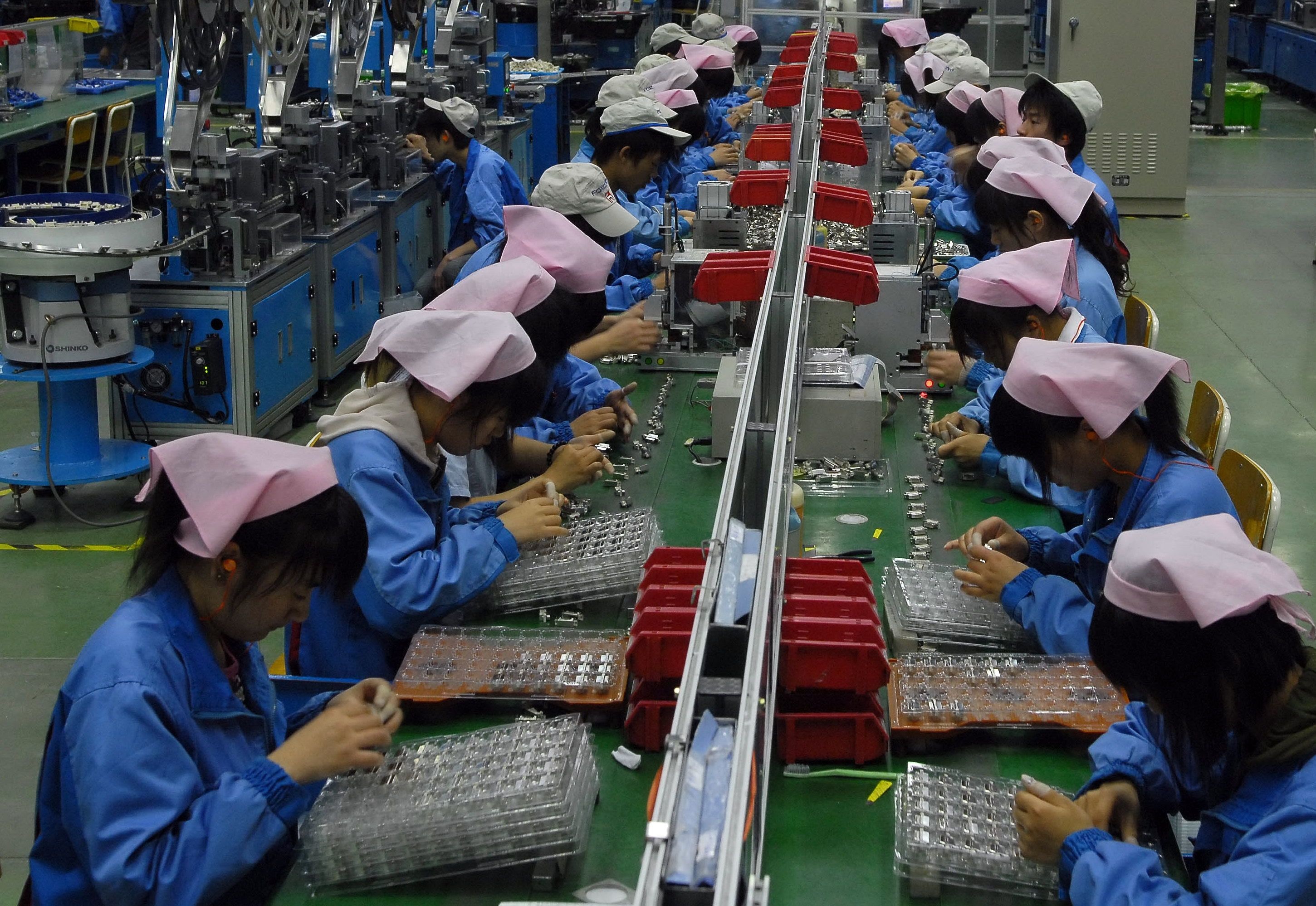Public participation
Field trials

In 2011, one in two Chinese lived in an urban area – in 1978, the number was only one in five. Since then, millions of former farmers have moved from the hinterland to the sprawling conurbations on the coast. The policy of reform and opening up that began around 1980 has unleashed what is probably the biggest internal migration in human history.
Government and administration have been largely unable to control or manage the cities’ rapid growth. Uncoordinated investment and development projects and informal – even illegal – construction are common in urban China.
Southern China’s Guangdong Province was the first region to be opened to market experiments and international investors. In the Pearl River Delta, which cuts through the middle of the province, the negative side effects of more than 30 years of rapid development are obvious today. They include an overloaded infrastructure, a shortage of public utilities, environmental pollution and decay in old industrial and residential areas. Little of the once vast and rich agricultural land is left in the Delta.
The Pearl River Delta is an important pioneering region for China’s reform policies. The central government has devolved major decision-making powers in economic policy affairs to local administrations, not only to the Delta’s Special Economic Zones. Local administrations have much discretion in shaping urban and economic development. As clear-cut responsibilities have not been defined, however, the political and administrative system remains highly complex and opaque, even at the local level.
In China’s process of transition, reforms are often confined to clearly defined territories at first. Local governments initiate many policy innovations in their territory. If they prove effective, their model is copied in other regions or even nationwide. The cities of the Pearl River Delta thus serve as laboratories for national reforms.
At the same time, there is competition among the cities. “Secrets of success” are not readily shared with others. Competition for international investments, in particular, is becoming more intense. Moreover, there is evidence of coordination problems, especially in regard to shared infrastructure. Transport links within the Delta remain underdeveloped. It adds to the problems that planning is made difficult by the large number of relevant state actors with diverse and often conflicting interests and overlapping powers.
Master and detail plans
Before 1989, there was no legal framework for urban planning. The City Planning Act of that year demands long-term master plans that extend up to 20 years and detailed plans that are normally limited to five years. However, the long-term planning periods and rigid bureaucratic approval processes proved incompatible with the dynamics of fast economic and population growth. In the communist planned economy, land was allocated for different purposes without much regard for real demand.
Today, planning authorities no longer set production targets; they define development goals. The central government no longer allocates resources among state agencies and production units. In principle, urban development should follow municipal authorities urban planning. However, special interests of private companies and government agencies often prevail over formal urban planning.
With urban problems getting out of hands and even threatening the cities’ competitiveness, however, urban planning has experienced something of a revival in the Pearl River Delta in recent years. Experiments with new planning models began in the late 1990s.
Birth of strategic urban planning
In summer 2000, the Guangzhou Municipal Planning Bureau consulted university planning institutes to draft new strategies. A citywide vision for Guangzhou in the 21st century was developed without the strict content-specific, formal and methodological stipulations of the City Planning Act. The result was the Concept Plan that was published in the same year. It marked the birth of strategic urban planning in China. The goals defined as “Expansion in the South, Optimisation in the North, Progress in the East and Connection in the West” back then still apply today:
- “Expansion in the South” refers to the industrial development of the districts of Panyu and Nansha. An industrial zone is planned – largely for heavy and chemical industry – around a new deep-water port that is currently under construction.
- ”Optimisation in the North” emphasises protection for the city’s drinking water resources that are located in that area. However, it also gives scope to more urban growth around the new international airport as well as infrastructure development.
- “Progress in the East” confirms the role of the Guangzhou Development District as the primary centre of growth in the city. The idea is to attract knowledge-based high-tech industries.
- “Connection in the West” means improving the transport links between Guangzhou and neighbouring Foshan.
The aspirations of economic restructuring and urban renewal are huge. Entire districts are being remodelled. The new urban structure is supposed to match well-defined functions, unlike the old structure that evolved in the course of history. To permit flexibility, however, the plans are implemented without detailed stipulations.
Guangzhou wishes to assert its status as the leading political and economic hub of south China. And it has set a precedent: Concept Planning is now practised in every major city in China.
Public participation
In neighbouring Shenzhen, planning has also opened up to new actors – its citizens. Shenzhen was China’s first Special Economic Zone and has enjoyed special rights for a long time. The city government still has legislative powers. Thanks to those powers, it was able to introduce statutory planning, which takes the public interest into account and makes formally adopted plans legally binding. Shenzhen has thus tackled the core weaknesses of Chinese urban planning. Specifics include:
- Shenzhen’s horizons for statutory plans are considerable shorter; plans are drafted annually.
- Approved plans are publicly announced and legally binding, which serves legal certainty.
- The public is involved in the planning process.
Official planning drafts are made available to the public for inspection for a period of 30 days, so individuals and organisations have an opportunity to submit proposals and ask for modifications. Submissions are examined and approved by an urban planning committee which is organised as an independent authority. It has 29 members, and no more than 14 of them may be officials of the city government. As decisions require a two-thirds majority, however, the officials have a kind of veto power.
As public involvement fell short of expectations, the municipal government looked for new forms of participation to learn about its people’s needs. It set up a company (Public Power), which conducts standardised opinion polls – on the quality of schools, for example, or the state of public transport.
In the meantime, citizens have become more active. Today, they can make proposals via an internet platform. Urban planning in Shenzhen is certainly not under the democratic control furnished by elections, but the government is serious about inviting citizens to submitting proposals. It is keen on an exchange of information.
This “passive” participation model is evidently deemed a success in China. Public Power, for example, has begun to work on behalf of other regional and municipal authorities in China that need sound foundations for planning.
Outlook
New planning models have not replaced the system of master and detail planning that is legally required in China. They did, however, introduce new supplementary elements that improved effectiveness and functionality substantially. Urban planning is being increasingly professionalised, and its impact on urban development has become stronger. Ever more attention is paid to aspects such as public spaces, image building and competitiveness.
The Pearl River Delta remains a test bed for urban planning and development in China. The authorities in Guangzhou and Shenzhen are proud of their pioneering role. To increase their policymaking capacity, they are trying harder to identify the needs of citizens and businesses. Experiments that work here will – sooner or later – be adopted elsewhere in China.
Christian Wuttke is a researcher at the University of Bremen. His book “Die chinesische Stadt im Transformationsprozess” (Chinese cities in transition) was published in 2012 by Edition Sigma in Berlin. It is based on his doctoral thesis, written at the University of Osnabrück.
cwuttke@iaw.uni-bremen.de








